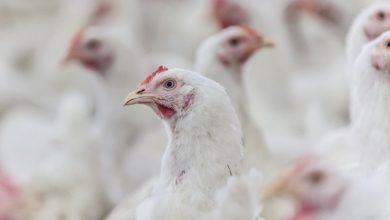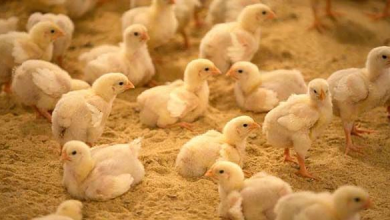Nipah Virus: An emerging threat of potential pandemic

Nipah Virus: An emerging threat of potential pandemic
Shikha Tamta and Sachin Kirad
- Shikha Tamta, Assistant professor at IIVER, Bahu, Akbarpur, Rohtak, Haryana-124001
- Sachin Kirad, Fourth year student at IIVER, Bahu, Akbarpur, Rohtak, Haryana-124001
Introduction:
NiV, is a non-segmented, single-stranded, negative sense RNA virus and consist of helical nucleocapsids which are enclosed in an envelope forming pleomorphic symmetry. It belongs to Paramyxoviridae family and closely linked to the Hendra virus compared to other members of the same family; such as the measles, mumps, parainfluenza, and Newcastle disease virus. Moreover, NiV displays cross-reactivity with antibodies produced in response to Hendra virus infection but not against other members of the family. NiV have six genes that encode for variety of proteins including; fusion proteins, glycoproteins, matrix proteins, nucleocapsids, phosphoproteins and polymerase proteins.
Epidemiology
The different species of Pteropus fruit bats (Pteropus hypomenalus, P. vampyrus, P. lylei, P. giganteus and many more), which are also known as flying foxes are the natural reservoirs for NiV. Being the natural hosts for NiV, they are asymptomatic carrier, but shed the viruses in their saliva, urine, semen, and excreta. NiV has a wide spectrum of hosts, including fruit bats, humans, pigs, dogs, cats, horses, guinea pigs, and hamsters. The evidence suggests that the NiV outbreaks observed in various parts of the world are linked to the distribution and migration pattern of Pteropus bats, which are native to tropical and subtropical parts of Australia, East Africa, Asia, and certain oceanic islands.
Since 1998, when it initially appeared in Malaysia, NiV is responsible for causing multiple outbreaks in Bangladesh, India, and Singapore. Other nations with sporadic NiV outbreaks include China, Vietnam, Thailand, Cambodia, Indonesia, East Timor, Madagascar, New Caledonia, and Papua New Guinea (Sun et al. 2018). There were two genetically distinct NiV strains: Malaysian strain (NiV-MY) and Bangladesh strain (NiV-BD). Although the nucleotide sequences of both the strains are highly similar (91.8%), NiV-BD is considered to have higher fatality rates (Pillai et al. 2020).
In 2001, three years after the emergence of Nipah virus a separate, geographically different NiV strain appeared independently in Bangladesh and India. These epidemics originated across the border of these two countries along the Nipah belt. Outbreak investigation revealed a strong correlation between NiV infection and consuming raw date palm sap, collected between December to February which is supposed to be contaminated with bat urine and saliva. Despite having a high seroprevalence of NiV in pigs of Bangladesh, they were not found to play any role in the spread of the infection. Since then, Bangladesh has experienced NiV outbreaks almost every year, while sporadic outbreaks in India.
Mode of Transmission
Important risk factors for NiV transmission include close contact with reservoir animals, eating contaminated food and handling diseased animals. The different pathways of Nipah virus transmission in humans and animals are pictorially shown in Figure 2. During the outbreaks in Malaysia and Singapore, pigs infected with the NiV virus were found to be the primary cause of human infections. The transmission of NiV infection between humans and pigs most likely happened via the respiratory route, aerosol droplets or direct contact. One of the primary causes of NiV infection in Bangladesh outbreaks was consumption of contaminated food (date palm sap) by secretions of fruit bats. NiV infection in humans in Bangladesh has also been linked to close contact with infected domestic animals (sick pigs, cows, and goats). There are strong evidences of the human-to-human transmission and nosocomial spread of infection in Bangladesh and Indian outbreaks. During 2014 Philippines outbreak Horse‐to‐human as well as human‐to‐human transmission were also noted and the flying foxes were most likely responsible for the NiV infections to horses and humans.
Anthropological investigation
In May 2004 to January 2005 in depth interviews with family members in households where in Nipah case occurred. neighboring family’s local health practitioner, hospital workers, date palm sap collectors, bat catchers. Reducing date palm SAP contamination by bats a randomised controlled trial selected 120 date palm SAP producing trees in a village randomly assigned 4 types of intervention to 15 trees each to cover shaved part SAP stream tap and collection pots: – bamboo skirt , dhoincha skirt, jute sticks skirt polythene 60s trees enrolled as control the control were matched on apparent height and shaving position. Pteropus bats were the NiV reservoir and pigs, the amplifying hosts, acquire the infection through consumption of fruits contaminated with bats saliva. Serological evidences of naturally acquired NiV infection in cats, dogs and horses were also recorded near outbreak farms. In the Philippines, NiV-M infection has been reported in both dogs and cats, with dogs carrying NiV-neutralizing antibodies and deaths in cats after eating infected horse meat.
Clinical form of the disease
The brain, lungs, heart, kidneys, and spleen are the major organs that are infected by the Nipah virus. In humans, NiV causes acute febrile encephalitis, fever, headache, drowsiness, dizziness, myalgia, and vomiting. The incubation period varied from 4 to 45 days, but it lasted between one and two weeks in the majority of cases. The disease starts with nonspecific symptoms such as sudden onset of fever, headache, myalgia, dizziness (Skowron et al. 2022). Within a week, neurological symptoms are the dominant features although 14-29% also showed respiratory involvement. In 60% of cases, the patients experienced significant neurological symptoms and the body condition rapidly deteriorated within 5-6 days. Nearly, 20% of infected individuals were reported to have seizures due to encephalitis. Tremors, areflexia, and segmental myoclonus were among the other neurological symptoms that were noted in the infected person. Long-term survivors have reported the problem of chronic fatigue and insomnia. Relapses of illness or late-onset encephalitis have been reported in certain NiV cases after the original infection, which often happened eight months or so after the initial infection. Some NiV patients initially exhibit pulmonary symptoms such as atypical pneumonia, cough, and severe respiratory distress.
In pigs, the incubation period is estimated to last 7–14 days. The age of the pigs affects the clinical pattern of the disease while greater proportion of population carry asymptomatic infection. Young animals between the ages of 4 weeks and 6 months manifested with febrile respiratory disease, which could take the form of rapid and laboured breathing or a harsh loud barking cough also known as one-mile cough (Kummer & Kranz 2022). Hemoptysis was seen in most of the cases. Overall mortality is low. The clinical presentation was same in adult animals (boars and sows), but the neurological symptoms—including frothy salivation, trouble swallowing, convulsions, paralysis, and lateral recumbency with clumsy paddling movements—were typically more obvious. Ferrets’ NiV infection resembles humans in term of respiratory and neurological symptoms and also shares similar histopathologic features.
Diagnosis
Initial signs and symptoms are nonspecific and diagnosis is often not suspected at time of presentation. NIV fiction can be diagnosed together with clinical history during acute 10 convergent phase of disease. Main test including RT-PCR from bodily fluids as well as antibiotic detection via ELISA. Different test includes ELISA, PCR assay and virus isolation by cell culture. Indian reports of person-to-person transmission in hospital settings nosocomial transmission. Kerala outbreak on 19 may 2018.Throat swabs urine and blood sample collected from suspected patient. Virus research diagnostic laboratory at Manipal hospital and National Institute of virology are conducting laboratory testing to confirm cases.
Prevention
Avoid exposure to Sick pigs and bats in endemic areas and not drinking raw date palms Sap. Culling of pigs in contact with and infected. Effective use of personal protective equipment reduces spread PPE includes gloves, apron, Gowns, protective eye wear, Face Shields and masks. Education and use of personal protective equipment by persons exposed to potentially infected pigs is highly recommended Undertrials with antiviral drugs Ribavirin. Drug ribavirin has been shown to be effective against viruses in invitro but human investigation to date has been inclusive and clinical usefulness of Reba wherein remains uncertain. Subunit vaccine on trials using Hendra g protein produce his cross protective antibiotic against. HENV and NiV has been recently used in Australia to protect horses against Hendra virus this vaccine offer great potential for hanipa virus protection in humans as well.




